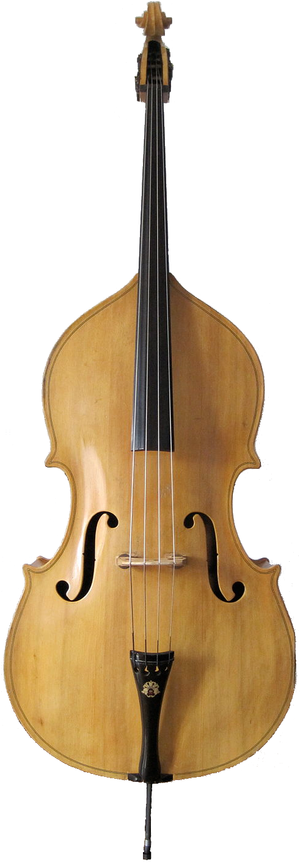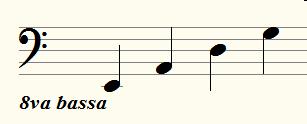Double bass
A double bass is a four-stringed stringed instrument tuned in fourths: E1 - A1 - D2 - G2. A bass (electric bass) is tuned the same way.
A double bass sounds an octave lower than what is notated, and is therefore a transposing instrument. In MusiCAD you will therefore usually set the transposition to -12 to make the part sound low enough.
Many double bass players are used to playing from chord symbols. When a D is notated, they play a D on the first beat, and the A on the third beat, the string next to it in four-quarter time. The trick of 'the string-besides' or the fifth of the chord as an alternative bass note always works on a double bass on the highest three strings. When writing double bass parts for beginning bass players, it is useful to take this into account.
To indicate that a double bass part must be 'plucked' write pizz for pizzicato, strum above the lot. If the bow has to be used, arco is placed above the part. up-bow and down-bow you indicate with bowing marks.
MusiCAD can easily generate double bass parts from chord symbols, using many of the same rules a human double bass player would. An automatic bass line is therefore a useful starting point for creating a 'real' bass part.
The lowest four strings of a guitar are tuned much the same as a double bass, just an octave higher; capable guitarists can therefore quickly get along with a double bass/bass guitar/ukulele bass


